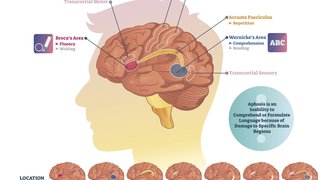
Finding the root cause of neurodegenerative diseases is one of humanity’s most puzzling questions. Today, about 50 million people worldwide have some form of dementia and 6 million in the U.S. alone are battling Alzheimer’s. The COVID-19 public health crisis has only exacerbated the problem. Alzheimer’s and dementia deaths have increased 16 percent during the pandemic.
At UT Southwestern, physician-scientists at the Peter O’Donnell Jr. Brain Institute have been hard at work trying to unravel the brain’s biggest mysteries. We are making significant progress toward uncovering the fundamental roots of Alzheimer’s, which will trigger better ways to diagnose and treat this disease.
The biggest clues derive from mechanism-based studies of the tau protein, whose accumulation in highly ordered assemblies causes neurodegeneration. Work that originated in my lab, and which has been replicated worldwide, indicates that tau adopts unique disease-causing structures that act like tiny infectious agents in the brain. They physically move between brain cells, and as they move, they replicate. This leads to progressive pathology.
Scientists within the Center for Alzheimer’s and Neurodegenerative Diseases, in close collaboration with colleagues in the O’Donnell Brain Institute, are employing a multidisciplinary approach that tackles the problem at several levels.
First, we are using advanced computer-based methods to model protein structure, based on clues from biochemical experiments and advanced application of cellular models. This has helped understand that the initial phases of disease involve a specific “shape shift” in the tau protein – a “Big Bang,” which then allows it to self-assemble and cause pathology.
We now know that this molecular event is the first detectable incidence of disease and are developing tools to detect it in patient blood or spinal fluid.
We have invested heavily in protein engineering to design “neutralizing” agents that will react with and help clear pathological forms of tau inside or outside the cell. These approaches dovetail with genetic therapies we are also developing. These therapies are similar to genetic treatments that have already shown tremendous promise in amyotrophic lateral sclerosis, and have been approved by the U.S. Food and Drug Administration (FDA) for spinal muscular atrophy, a devastating disorder of infants and children.
Solving the tau puzzle
Tau is a protein found in the brain that enables the transport of intercellular components. Sometimes a tau protein can become defective, or toxic, and transform into an amyloid (a misfolded protein clump), or what UT Southwestern's Dr. Marc Diamond calls a tau aggregate, which eventually causes the cell to dissolve and die.
Where will tau research lead?
In the near term, one exciting line of work suggests that we can use an advanced radiological method, focused ultrasound, to introduce a tau imaging agent to the brain. If work in mouse models is replicated in humans, this will allow us to detect tau very early during the process of deposition.
In the longer term, we are using protein engineering to design agents that will bind the tau molecule when it assumes disease-associated conformations. We are using this information in two ways.
- First, we are engineering novel diagnostic tests that will have very high sensitivity and specificity for detection of pathological tau in spinal fluid or blood. In collaboration with our clinical colleagues, we are recruiting subjects with Alzheimer’s and related disorders to donate blood and spinal fluid, and thereby to determine the feasibility of this approach.
- Second, we are using knowledge of tau structure to design antibodies that will target pathological forms of tau for clearance. Several drugs based on this idea are in clinical trials being run by major pharmaceutical companies, one of which I co-invented when I was a faculty member at Washington University in St. Louis.
New insights that are based on our most recent research suggest these approaches could be much improved, and we are optimistic that we will soon be introducing a next generation of therapies and treatments for neurodegenerative diseases based on our ideas.
The Big Bang of Alzheimer's
In 2018, physician-scientists at UT Southwestern discovered the “Big Bang” of Alzheimer’s disease – the precise point at which a healthy protein becomes toxic but has not yet formed deadly tangles in the brain.











